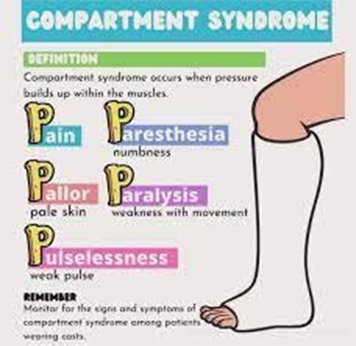Which disorder is associated with the compression of the bilateral nerve roots of the lumbosacral region?
Anterior spinal artery syndrome
Cauda equina syndrome
Horner's syndrome
Brown-Séquard syndrome
The Correct Answer is B
Choice A rationale: Anterior spinal artery syndrome is caused by ischemia of the anterior two-thirds of the spinal cord, resulting in loss of motor function and pain and temperature sensation below the level of the lesion.
Choice B rationale: This is a condition that occurs when the nerve roots in the lower end of the spinal cord are compressed, causing symptoms such as lower back pain, sciatica, saddle anesthesia, bladder and bowel dysfunction, and sexual dysfunction.
Choice C rationale: Horner's syndrome is caused by damage to the sympathetic nerve fibers in the neck or chest, resulting in drooping eyelid, constricted pupil, and lack of sweating on one side of the face.
Choice D rationale: Brown-Séquard syndrome is caused by hemisection of the spinal cord, resulting in ipsilateral loss of motor function and proprioception and contralateral loss of pain and temperature sensation below the level of the lesion.
Nursing Test Bank
Naxlex Comprehensive Predictor Exams
Related Questions
Correct Answer is C
Explanation
Choice A rationale: The patient with type 2 diabetes admitted with pneumonia might not necessarily need insulin therapy to prevent ketoacidosis.
Choice B rationale: Type 2 diabetes doesn't typically involve islet cell antibodies destroying the pancreas's ability to produce insulin.
Choice C rationale: In this scenario, the patient might have enough endogenous insulin to prevent ketosis but could be at risk for hyperosmolar hyperglycemic syndrome due to illness-induced stress.
Choice D rationale: Type 2 diabetes often involves some degree of endogenous insulin secretion, and not all patients require daily insulin injections.
Correct Answer is D
Explanation
Choice A rationale: Tachycardia and petechiae over the chest wall and buccal membranes are signs of fat embolism syndrome, another complication of fractures that occurs when fat globules enter the bloodstream and obstruct pulmonary vessels.
Choice B rationale: Positive Homan's sign with calf tenderness and warmth are signs of deep vein thrombosis, a condition that can occur after prolonged immobilization or surgery.
Choice C rationale: Acute cough, cyanosis, and decreased blood pressure are signs of pulmonary embolism, a life-threatening condition that occurs when a blood clot travels to the lungs and blocks blood flow.
Choice D rationale: These are signs of compartment syndrome, which is a serious complication of fractures that occurs when increased pressure within a closed space compromises blood flow and tissue perfusion. Compartment syndrome can lead to ischemia, necrosis, and nerve damage if not treated promptly.

Whether you are a student looking to ace your exams or a practicing nurse seeking to enhance your expertise , our nursing education contents will empower you with the confidence and competence to make a difference in the lives of patients and become a respected leader in the healthcare field.
Visit Naxlex, invest in your future and unlock endless possibilities with our unparalleled nursing education contents today
Report Wrong Answer on the Current Question
Do you disagree with the answer? If yes, what is your expected answer? Explain.
Kindly be descriptive with the issue you are facing.
